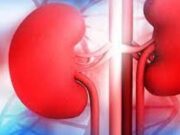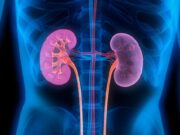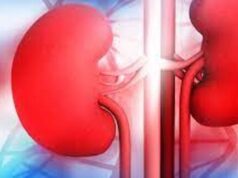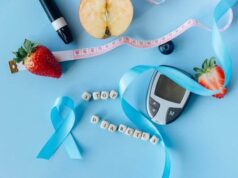Diabetes (Diabetes mellitus) is a health condition that affects the body’s ability to use glucose (blood sugar) effectively. Glucose is our precious life fuel in the form of blood sugar. This disruption is due to problems with insulin, a hormone secreted by the pancreas. Insulin plays a vital role in transporting glucose into the body and brain cells, allowing them to work as a source of energy.
With diabetes in the body system, it either doesn’t make enough insulin or can’t use it properly. So, glucose starts building up in the bloodstream instead of entering the cells, leading to a rise in blood sugar levels.
The three main types of diabetes include type 1 diabetes, type 2 diabetes and gestational diabetes. They are either reversing (curable) or non-reversing (chronic). Type 1 diabetes and type 2 diabetes fall under chronic diabetes. Gestational and Prediabetes are potentially reversible diabetic conditions.
It’s interesting to note that the most common form of diabetes is type 2, representing about 95% of all diabetes cases. All other types of diabetes occur in the remaining 5%.
A report by the World Health Organization (WHO) states that more than 500 million people across the world have diabetes. The study predicts a rise to 643 million by 2030 and 783 million by 2045. In the United States, more than 37 million people have diabetes, which is about 11% of the population.
What are the Types of Diabetes?
The 12 types of diabetes include the following:
- Type 1 diabetes
- Type 2 diabetes
- Prediabetes
- Gestational diabetes
- Latent Autoimmune Diabetes in Adults (LADA)
- Maturity Onset Diabetes of the Young (MODY), also known as Monogenic diabetes.
- Neonatal diabetes
- Wolfram Syndrome
- Alström Syndrome
- Type 3c diabetes
- Steroid-induced diabetes
- Cystic fibrosis diabetes
Type 1 Diabetes
Type 1 diabetes is a chronic condition characterized by inadequate insulin production in the pancreas. It often develops during the childhood or adolescence. Individuals with type 1 diabetes must use insulin injections to maintain stable blood sugar levels.
Type 2 Diabetes
Type 2 diabetes stems from insulin resistance, a condition where the body’s cells no longer respond to insulin effectively. This results in high blood sugar levels. It is often due to lifestyle and environmental factors such as poor diet and genetic history. Though it can occur in children and adolescents, it typically develops in adults. You can manage type 2 diabetes by choosing a healthy lifestyle, taking medications, and sometimes insulin.
Prediabetes
Prediabetes is a condition in which blood sugar levels exceed the normal range yet do not reach the threshold for a type 2 diabetes diagnosis. It’s a warning sign that you’re at risk of developing diabetes.
Gestational Diabetes
Gestational diabetes occurs during pregnancy when the body is unable to produce sufficient insulin to meet the increased demand, resulting in high blood sugar levels. This typically develops between the 24th and 28th week of pregnancy. Gestational diabetes usually goes away after delivery but may sometimes persist, developing into type 2 diabetes.
LADA
LADA is also called type 1.5 because it has similar patterns to type 1 and type 2 diabetes. It results from an autoimmune reaction. Type 1.5 diabetes develops much more slowly than type 1 and sets in gradually, like type 2. It often affects people over the age of 30. LADA cannot be treated by diet or a healthy lifestyle.
Diabetes stems from various causes and varies by type. Each type of diabetes manifests with distinctive symptoms. Regardless of any kind of diabetes you have, it can lead to surplus sugar in your blood. Too much blood sugar can cause serious issues.
Causes of Diabetes
The leading causes of diabetes are autoimmune disease, overweight, obesity, physical inactivity, insulin resistance, genetics and environmental factors. However, what triggers each type of diabetes often differs from each other.
What causes type 1 diabetes?
Type 1 diabetes is caused by an autoimmune disease whereby your body’s immune system mistakenly attacks and destroys the insulin-producing beta cells in the pancreas. This response results in a significant reduction or complete cessation of insulin production, resulting in high blood sugar levels. Scientists cannot pinpoint why this happens but predict that genetics and environmental factors likely play a role.
What causes type 2 diabetes?
You can have type 2 diabetes if you are obese or overweight or do not engage in enough physical activity. Other factors that may cause type 2 diabetes include insulin resistance, gene and family history, and environmental factors. Such environmental factors include unhealthy diets, poor sleep, chronic stress, and exposure to toxins.
Insulin resistance
Insulin resistance is when liver, muscle, and fat cells do not use insulin properly. This condition is usually the first stage of type 2 diabetes.
For the body to keep up with the demand, it needs the pancreas to produce more insulin to transport glucose into the cells. Over time, the pancreas becomes overworked and can’t make enough insulin. As a result, the blood sugar levels begin to rise.
Gene and family history
Genetics and family history influence an individual’s predisposition to type 2 diabetes. Specific genes can alter how the body produces and uses insulin. A family history of diabetes can increase the likelihood of inheriting these genetic traits associated with insulin resistance or impaired insulin production. This situation makes the individual more susceptible to developing type 2 diabetes.
Symptoms of Diabetes
The severity of diabetes symptoms depends on how high your blood sugar level is and the type of diabetes you have. Type 1 diabetes shows quickly and usually more severe than Type 2 diabetes. While gestational diabetes often shows no noticeable symptoms, other types like LADA, monogenic and CFRD mirror type 1 and type 2.
The most-occurring symptoms of type 1 and type 2 diabetes include:
- Increased thirst (polydipsia) and frequent urination
- Increased hunger
- Unexplained weight loss
- Fatigue
- Blurred vision
- Slow-healing wounds
- Tingling or numbness in hands or feet
- Irritability
- Increased susceptibility to yeast infections
Type 1 diabetes and type 2 diabetes can develop at any age in an individual’s life. While type 1 diabetes often develops during childhood or teen years, type 2 is more common in people older than 40.
How to Prevent Diabetes?
The five primary ways to prevent diabetes include the following:
1. Exercise regularly to lose extra weight: Losing weight helps to prevent diabetes. An American Diabetes Association (ADA) funded research highlights that losing weight helps prevent Metabolic Syndrome (includes obesity), which is a primary cause of cardiovascular disease and diabetes.
2. Be more physically active: Engaging in physical activities has many benefits. These benefits include weight loss, low blood sugar, and a boost in insulin sensitivity.
3. Eat healthy diets: Eat a diet rich in whole, plant-based, and healthy fats. Diets rich in whole foods include fruits, vegetables, whole grains, and lean proteins. Plant foods provide the body with carbohydrates, vitamins and minerals. Some sources of healthy fats include olive, sunflower, nuts and seeds, and fatty fish.
4. Manage stress: High-level stress can significantly increase blood glucose levels. Use effective stress management techniques like meditation, regular participation in hobbies, and yoga to reduce stress.
5. Regular health check-ups: Go for regular health check-ups to monitor blood sugar levels, blood pressure, and cholesterol. Health check-ups help early in detection, especially if there’s a family history of diabetes.
Are you currently having any of these symptoms listed above and you’ve confirmed with your doctor and they said it’s actually diabetes? We’ve got a solution for you. Here’s a clinically certified diabetes product that can help you crush your sugar level in 90 days or less.


























